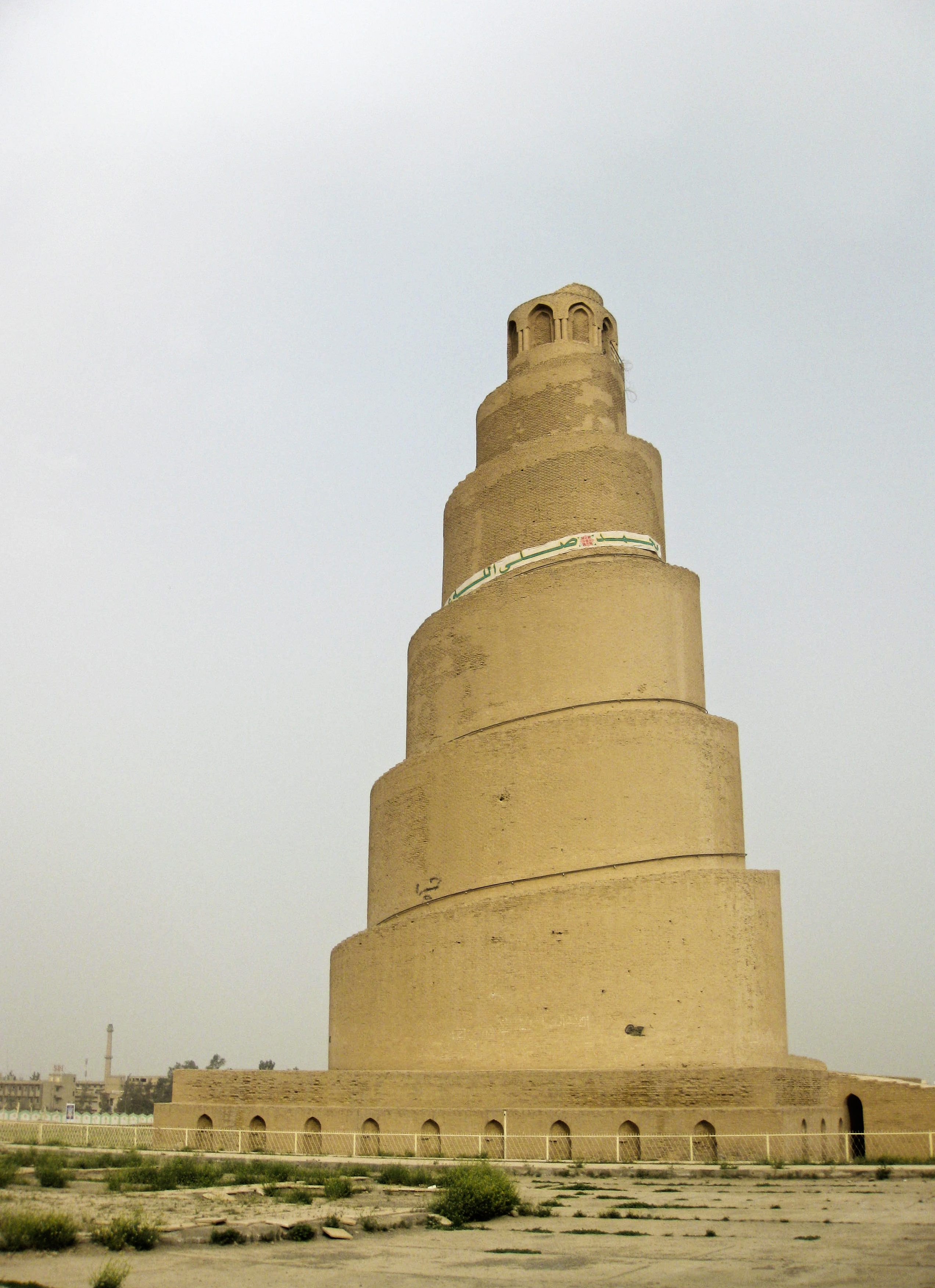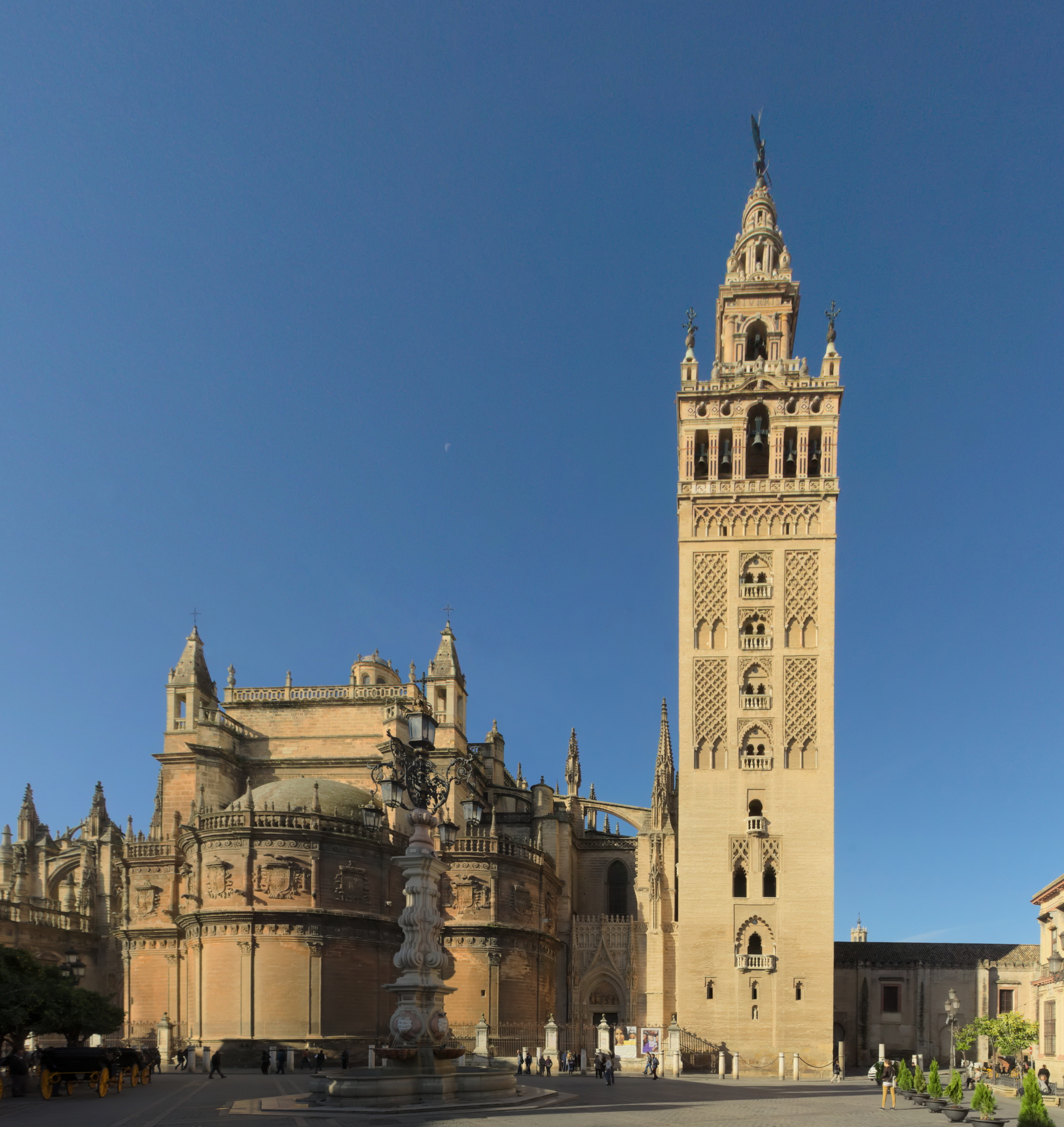|
Qal'a Of Banu Hammad
Qal'at Bani Hammad (), also known as Qal'a Bani Hammad or Qal'at of the Beni Hammad (among other variants), is a fortified palatine city in Algeria. Now in ruins, in the 11th century, it served as the first capital of the Hammadid dynasty. It is in the Hodna Mountains northeast of M'Sila, at an elevation of , and receives abundant water from the surrounding mountains. The site is near the town of Maadid (aka Maadhid), about southeast of Algiers, in the Maghreb. In 1980, it was inscribed as a World Heritage Site by UNESCO under the name Al Qal'a of Beni Hammad, and described as "an authentic picture of a fortified Muslim city". The town includes a long line of walls. Inside the walls are four residential complexes, and the largest mosque built in Algeria after that of Mansurah. It is similar in design to the Grand Mosque of Kairouan, with a tall minaret, . Excavations have brought to light numerous terracotta, jewels, coins and ceramics testifying to the high level of civiliz ... [...More Info...] [...Related Items...] OR: [Wikipedia] [Google] [Baidu] |
Grand Mosque Of Kairouan
The Great Mosque of Kairouan (), also known as the Mosque of Uqba (), is a mosque situated in the World Heritage Site, UNESCO World Heritage town of Kairouan, Tunisia and is one of the largest Islamic monuments in North Africa. Established by the Arab general Uqba ibn Nafi in the year 50 Islamic calendar , AH (670 C.E.) at the founding of the city of Kairouan, the mosque occupies an area of over . It is one of the oldest places of worship in the Muslim world, Islamic world, and is a model for all later mosques in the Maghreb.''Great Mosque of Kairouan'' (discoverislamicart.org) Its perimeter, of about , contains a hypostyle prayer hall, a marble-paved courtyard and a square minaret. In addition to its spiritual prestige, the Mosque of Uqba is on ... [...More Info...] [...Related Items...] OR: [Wikipedia] [Google] [Baidu] |
Minaret
A minaret is a type of tower typically built into or adjacent to mosques. Minarets are generally used to project the Muslim call to prayer (''adhan'') from a muezzin, but they also served as landmarks and symbols of Islam's presence. They can have a variety of forms, from thick, squat towers to soaring, pencil-thin spires. Etymology Two Arabic words are used to denote the minaret tower: ''manāra'' and ''manār''. The English word "minaret" originates from the former, via the Turkish language, Turkish version (). The Arabic word ''manāra'' (plural: ''manārāt'') originally meant a "lamp stand", a cognate of Hebrew language, Hebrew ''Temple menorah, menorah''. It is assumed to be a derivation of an older Linguistic reconstruction, reconstructed form, ''manwara''. The other word, ''manār'' (plural: ''manā'ir'' or ''manāyir''), means "a place of light". Both words derive from the Arabic root ''n-w-r'', which has a meaning related to "light". Both words also had other meani ... [...More Info...] [...Related Items...] OR: [Wikipedia] [Google] [Baidu] |
Great Mosque Of Qal'at Bani Hammad
The Great Mosque of Al Qala'a() is a major historical Mosque located in the UNESCO World Heritage city of Qal'at Bani Hammad, in the province of M'sila, Algeria. Its construction dates back to the early 11th century, during the rule of the Hammadid Emir Hammad ibn Buluggin. The Mosque spans an area of over 3500 square meters (38,000 sq ft), taking on a rectangular layout. It encompasses a vast courtyard, a hypostyle prayer hall, and a square minaret towering at 25 meters (82 ft) in height. Regarded as one of the largest historic mosques in Algeria, second only to the Mansourah, it also contains one of the country's oldest minarets. Additionally, the mosque likely exerted an influence on subsequent Almohad minarets, notably the Giralda in Seville. Together with other archaeological remnants of palatial structures, it stands as a primary testament to the opulence and impact of the Hammadid civilization. History The mosque was founded by the first Hammadid emir, Hammad i ... [...More Info...] [...Related Items...] OR: [Wikipedia] [Google] [Baidu] |
Keep
A keep is a type of fortified tower built within castles during the Middle Ages by European nobility. Scholars have debated the scope of the word ''keep'', but usually consider it to refer to large towers in castles that were fortified residences, used as a refuge of last resort should the rest of the castle fall to an adversary. The first keeps were made of timber and formed a key part of the motte-and-bailey castles that emerged in Normandy and Anjou during the 10th century; the design spread to England, Portugal, south Italy and Sicily. As a result of the Norman Conquest of England in 1066, use spread into Wales during the second half of the 11th century and into Ireland in the 1170s. The Anglo-Normans and French rulers began to build stone keeps during the 10th and 11th centuries, including Norman keeps, with a square or rectangular design, and circular shell keeps. Stone keeps carried considerable political as well as military importance and could take a decade or more t ... [...More Info...] [...Related Items...] OR: [Wikipedia] [Google] [Baidu] |



